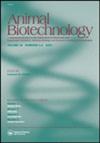全球火鸡(Meleagris gallopavo)种群完整有丝分裂基因组 DNA 的测序和特征描述。
IF 1.7
3区 农林科学
Q2 AGRICULTURE, DAIRY & ANIMAL SCIENCE
引用次数: 0
摘要
火鸡(Meleagris gallopavo)的驯化历史可追溯到公元前 700 年至 200 年的墨西哥时期。这一过程涉及多个因素,最终形成了现代地方火鸡品种。本研究调查了各种当地火鸡的完整线粒体多样性。研究人员从不同的火鸡种群中采集了 73 只火鸡样本,包括意大利本土品种、美国品种(纳拉甘西特)以及来自美国和墨西哥的野生火鸡。线粒体 DNA(mtDNA)是研究生物多样性和品种系统发育的有力工具。对整个 mtDNA 进行了分析,以确定火鸡品种的独特特征、线粒体特异性以及火鸡种群之间的系统发育关系。共鉴定出 44 个多态位点。布莱恩佐罗和纳拉甘塞特火鸡被鉴定为基因同质种群。将我们的样本与来自不同国家的 96 只在线火鸡的 mtDNA D-loop 进行比较,发现了 32 种不同的单倍型。H1 和 H2 是最多的单倍型,在 185 个序列中占 132 个,它们只有一个突变。H1 包括来自各个地区的样本,而 H2 则以意大利样本为主。与其他种群相比,美国和墨西哥样本的 mtDNA 变异似乎更大。本文章由计算机程序翻译,如有差异,请以英文原文为准。
Sequencing and characterization of complete mitogenome DNA of worldwide turkey (Meleagris gallopavo) populations.
The history of turkey (Meleagris gallopavo) domestication can be traced back to the period between 700 and 200 BC in Mexico. This process involved multiple contributors and resulted in the development of modern local turkey breeds. This research investigates the complete mitochondrial diversity across a diverse range of local turkeys. Seventy-three turkeys were sampled from various populations, including autochthonous Italian breeds, an American breed (Narragansett), as well as wild turkeys from the USA and Mexico. The mitochondrial DNA (mtDNA) was employed as a powerful tool for biodiversity and breed phylogeny investigation. An analysis of the entire mtDNA was conducted to identify breed-specific unique traits, mitochondrial-specific characteristics, and the phylogenetic relationship among turkey populations. A total of 44 polymorphic sites were identified. Brianzolo and Narragansett birds were characterized as genetically homogeneous populations. Thirty-two different haplotypes were identified when our samples were compared with mtDNA D-loop of 96 online available turkeys from various geographical countries. H1 and H2, differing for one mutation, were the most abundant, comprising 132 of the 185 sequences. H1 included samples coming from every region, while H2 was predominantly characterized by Italian samples. USA and Mexican samples appear to be more variable in their mtDNA than the other populations.
求助全文
通过发布文献求助,成功后即可免费获取论文全文。
去求助
来源期刊

Animal Biotechnology
工程技术-奶制品与动物科学
CiteScore
2.90
自引率
5.40%
发文量
230
审稿时长
>12 weeks
期刊介绍:
Biotechnology can be defined as any technique that uses living organisms (or parts of organisms like cells, genes, proteins) to make or modify products, to improve plants, animals or microorganisms for a specific use. Animal Biotechnology publishes research on the identification and manipulation of genes and their products, stressing applications in domesticated animals. The journal publishes full-length articles and short research communications, as well as comprehensive reviews. The journal also provides a forum for regulatory or scientific issues related to cell and molecular biology applied to animal biotechnology.
Submissions on the following topics are particularly welcome:
- Applied microbiology, immunogenetics and antibiotic resistance
- Genome engineering and animal models
- Comparative genomics
- Gene editing and CRISPRs
- Reproductive biotechnologies
- Synthetic biology and design of new genomes
 求助内容:
求助内容: 应助结果提醒方式:
应助结果提醒方式:


